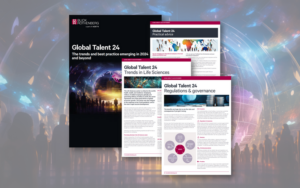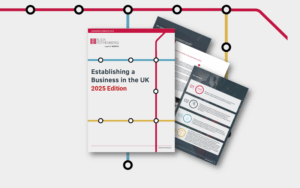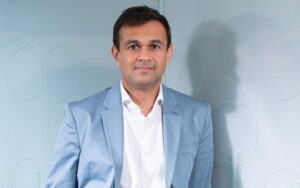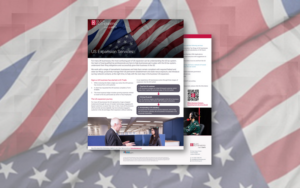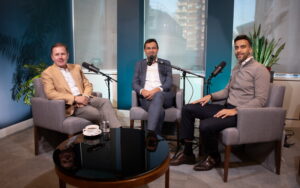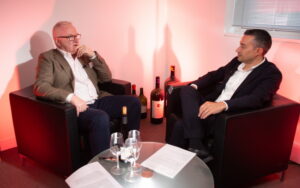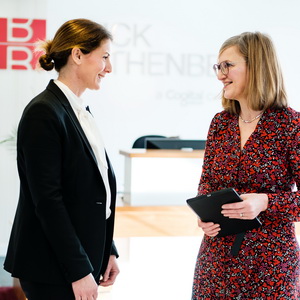UK considerations for non-UK pension schemes
We look at the tax treatment and implications of participation in non-UK pension schemes
As international secondments and business travel resumes, employers who have secondees and business visitors from overseas are becoming a topical matter again.
Care needs to be taken where the employee is subject to UK tax to ensure the correct treatments is applied to their participation in non-UK pension schemes.
Are pension inputs eligible for UK tax relief?
Unless the non-UK scheme meets the criteria to be a relevant non-UK scheme (RNUKS), the default approach is to consider any employee input into the non-UK scheme as not relievable and any employer input should be considered as taxable remuneration subject to PAYE.
A scheme is regarded as an RNUKS when it is not a UK-registered pension scheme, and it is eligible for relief via one of the following methods:
- migrant member relief (MMR)
- transitional corresponding relief
- double taxation arrangement (DTA)
- section 307, Income Tax (Earnings and Pensions) Act 2003
A scheme may also be an RNUKS where it is not a registered pension scheme and a relevant transfer is paid into the scheme, which is a transfer of accrued pension rights either from a UK-registered pension scheme, or another RNUKS.
How do the methods of relief differ?
Section 307 relief is different to the other methods, as it relates solely to the automatic exemption from UK tax of employer pension input. Section 307 relief is available where the scheme provides benefits on retirement and/or death only.
MMR, transitional corresponding relief, and DTA relief enable both employee and employer pension input to be relieved. For a non-UK scheme to be regarded as eligible for any of these reliefs, the scheme must meet the overseas pension scheme (OPS) criteria.
What is an OPS?
A scheme meets the OPS criteria when it satisfies the regulations and recognitions tests.
The regulations test means that in the jurisdiction where the scheme is established, if there is a body that regulates pensions the scheme must be regulated by that body. If no body exists, then the scheme must be based in either the EU, Norway, Iceland or Liechtenstein, or be an occupational scheme, or be provided by a person who is regulated to provide the scheme.
The recognitions test requires that: the scheme must be open to citizens in the country where it is established; in the country where the scheme is established tax relief must be available on either input into the scheme, or distributions (but not both); and the scheme must be recognised by or registered with the tax authorities in the country where it is established.
When do the different forms of relief apply?
It is possible to claim relief via a DTA with the following jurisdictions: US, Canada, Chile, France, Ireland, Denmark, Netherlands, Switzerland, Slovenia, Faroe Islands, Moldova and South Africa.
Each DTA should be reviewed to determine the criteria for claiming relief. Generally, the individual must have been participating in the RNUKS prior to working in the UK and have received relief for pension input in the DTA partner country. HMRC’s agreement must also be obtained that the scheme generally corresponds to a UK pension. The exceptions are the UK’s agreements with the US and Ireland. US-qualified plans such as 401k and IRA schemes are regarded as corresponding to UK schemes. Similarly, Irish-based schemes that are tax approved or registered for approval in Ireland are also considered as corresponding to UK schemes.
Transitional corresponding relief applies in cases where an individual received corresponding relief for pension input during the 2005/06 tax year.
MMR is available where an application has been filed with HMRC to validate that the scheme is an RNUKS. To claim MMR, the individual must have been contributing to the scheme and receiving tax relief in the overseas country prior to working in the UK.
Claiming relief
While relieved employer input is excluded from an individual’s reportable UK taxable remuneration, any relief for employee input should be claimed via a self-assessment return. The exception to this is where an employer is reporting an individual’s earnings via either an EP Appendix 6 Modified Payroll, or EP Appendix 8 Special Annual Payroll where the employee pension input can be deducted when calculating the UK taxable earnings figure, or where an in-year claim is submitted and approved by HMRC, where pension relief may then be included by an adjustment to the individual’s PAYE coding. Even if the individual has obtained in-year relief, they will still need to file a self-assessment return.
Consequences of claiming relief
As a result of obtaining UK tax relief for pension inputs, individuals may be liable to the annual allowance (AA) charge, the lifetime allowance (LTA) charge and the member payment charges, as modified to apply to an RNUKS. There are time limits to the application of some of these rules.
Employers should be aware that for their secondees or business visitors, if an individual has previously obtained one of the forms of fixed protection (2012, 2014 or 2016) in respect of an enhanced LTA, they will lose their fixed protection if further relieved pension inputs occur.
Certain DTAs mandate that to claim relief the scheme must be subject to the same conditions as a UK scheme. This requires the overseas pension manager to notify HMRC if any benefit crystallisation events (BCEs) occur in respect of previously relieved input.
The exceptions to this requirement are the DTAs with Canada, US, Ireland and Denmark. Additionally, the DTAs with France and South Africa refer to being subject to the same conditions for employee input, but not for employer input. If an individual ceases work in the UK and relief for pension input is no longer claimed, a deemed BCE election can be filed to test the relieved input against the LTA, which releases the scheme manager from having to declare further BCEs to HMRC, provided no further relieved input occurs.
Both MMR and transitional corresponding relief also require the overseas pension manager to report BCEs to HMRC (it is also possible for a deemed BCE election to be made).
AA calculations are also different for RNUKS. Pension input to be tested against the AA is adjusted by a prescribed formula: (TE+TSI)/EI. TE is taxable earnings, TSI is taxable specific income and EI is total employment income.
For defined contribution arrangements, total employer contributions are also subject to the (TE+TSI)/EI formula. After the formula has been applied to the employer contributions, relieved employee and any relieved personal contributions are added to the employer input to arrive at total relieved input for the year to check against the AA.
For defined benefit and cash balance schemes, the higher of the accrual (which is subject to the TE+TSI/EI formula), or UK tax-relieved employee contributions is the relieved input for the year to check against the AA.
Carry-forward unused AA can be utilised for RNUKS, provided that the individual was a member of the same RNUKS in previous years or, if a member of a different RNUKS, carry-forward may also be available if the individual had also received relief for input into that RNUKS as well. For tax years where input is relieved, the amount of unused AA to carry forward is the AA less the relieved input. If an individual was a member of a relieved RNUKS prior to working in the UK in years where no input is relieved, carry-forward is based on the AA less total input.
Final word
Ensuring that the correct treatment is applied for non-UK pension input is a challenging area. This article provides a summary of the key considerations. The crucial compliance point is the importance of an employer ensuring that the non-UK scheme is reviewed to see whether input can be relieved, or if employer input should be regarded as taxable remuneration. Once such an assessment has been made, it can then be considered whether employee input can be relieved.
First published for the ICAEW 28 Sept 22.
You may also be interested in

Is the End of the Triple Lock Pension Inevitable?

The UK is a stable, open and innovation-driven market for Japanese firms to invest in





